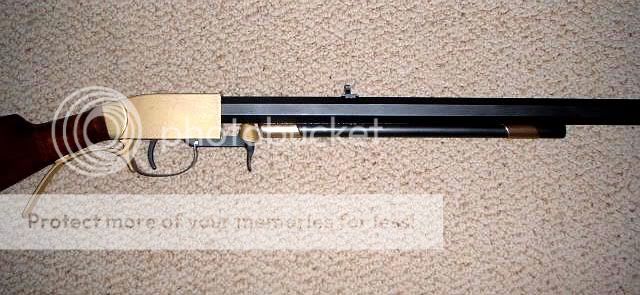Thebeancounter
32 Cal.
- Joined
- Jan 17, 2008
- Messages
- 9
- Reaction score
- 0
I have a 45 caliber 35 inch Green Mountain barrel and need to come up with a way to attach a forestock.
I would rather not pin it because I want to be able to disassemble things for cleaning.
The barrel is a 1/18 twist and I intend to shoot conicals with it. Seems to me that this will add up to a fair amount of pressure so I want to be safe.
The barrel is 1.27 inches and weighs a ton. How much metal do I need to be safe - very safe?
I could drill and tap it, but need to know a safe drill depth. Or silver solder a nut to the barrel and then use a machine screw to hold the forestock. Also thought about silversoldering a hunk of metal that I could drill and tap in order to attach forestock.
Another idea was to use an under rib and attach the pipes and forestock to it. Still need to attach the under rib with screws.
Looks like I have almost .4125" of metal to work with. My initial thought was to drill half the distance.
Any ideas?
Thanks,
- Bill
I would rather not pin it because I want to be able to disassemble things for cleaning.
The barrel is a 1/18 twist and I intend to shoot conicals with it. Seems to me that this will add up to a fair amount of pressure so I want to be safe.
The barrel is 1.27 inches and weighs a ton. How much metal do I need to be safe - very safe?
I could drill and tap it, but need to know a safe drill depth. Or silver solder a nut to the barrel and then use a machine screw to hold the forestock. Also thought about silversoldering a hunk of metal that I could drill and tap in order to attach forestock.
Another idea was to use an under rib and attach the pipes and forestock to it. Still need to attach the under rib with screws.
Looks like I have almost .4125" of metal to work with. My initial thought was to drill half the distance.
Any ideas?
Thanks,
- Bill






